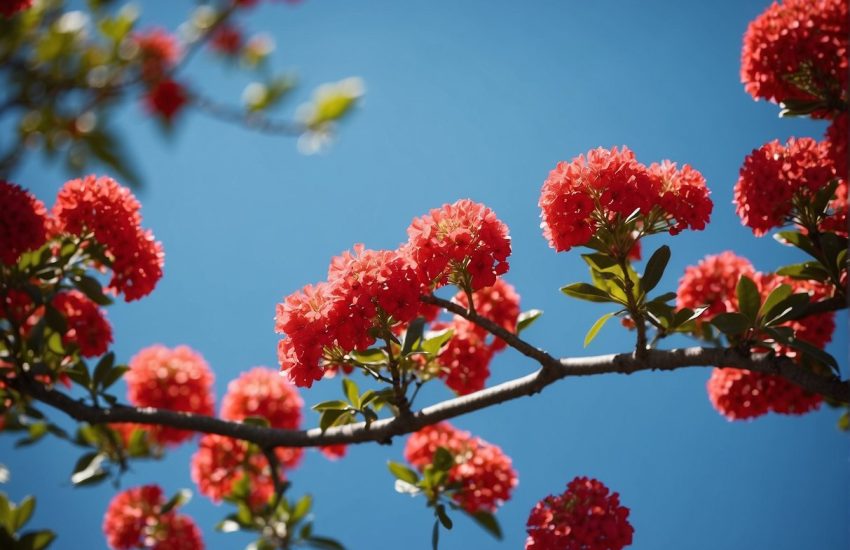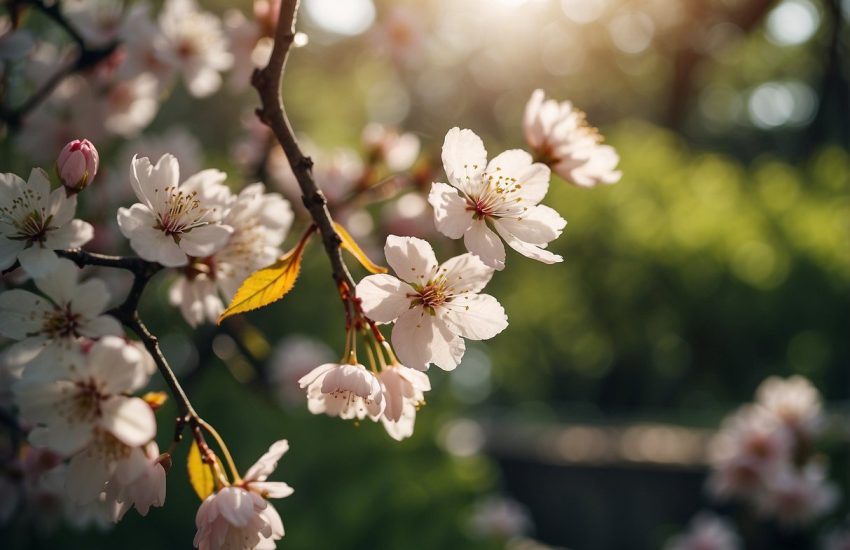Tree with Red Flowers in Florida: Identification and Characteristics
Florida is home to a wide variety of trees, many of which are known for their stunning visual appeal. Among these are trees with red flowers, which can add a vibrant pop of color to any landscape. Whether you are looking to grow a tree with red flowers in your own yard or simply appreciate their beauty, there are many options to choose from in Florida.

One of the most iconic trees with red flowers in Florida is the Royal Poinciana. This ornamental tree is known for its vibrant, fiery-red blooms that cover the tree’s canopy during the summer months. The Royal Poinciana is a popular choice for landscaping in Florida due to its showy display of flowers and its ability to provide shade during the hot summer months. Other popular options include the Bottlebrush and the Firebush, both of which are known for their bright red blooms and attractive foliage.
Selecting the Right Red-Flowering Tree for Your Florida Garden
When it comes to choosing the right red-flowering tree for your Florida garden, there are several factors to consider. Understanding Florida’s climate and soil requirements, as well as the popular red-flowering trees suited to Florida’s environment, will help you make an informed decision.
Understanding Florida’s Climate and Soil Requirements
Florida’s climate is subtropical in the north and tropical in the south, which means that the state experiences hot and humid summers, mild winters, and frequent rainfall. As a result, red-flowering trees that thrive in Florida are typically those that are native to the state or those that can tolerate its unique climate and soil conditions.
Most red-flowering trees prefer full sun and well-drained soil, but some are more drought-tolerant than others. It’s important to choose a tree that can withstand Florida’s growing zones, which range from USDA hardiness zones 8a to 11.
Popular Red-Flowering Trees Suited to Florida’s Environment
Some of the most popular red-flowering trees suited to Florida’s environment include the Royal Poinciana, Bottlebrush, Red Buckeye, Crape Myrtle, Redbud, Pomegranate Tree, and Firebush.
The Royal Poinciana, in particular, is a favorite among Floridians for its showy display of fiery-red blooms and ability to provide shade during the hot summer months. It is a fast-growing deciduous tree that can reach heights of up to 20 feet with a rounded canopy that can spread wider than tall.
Factors to Consider: Size, Canopy, and Growth Rate
When selecting a red-flowering tree for your Florida garden, it’s important to consider the size, canopy, and growth rate of the tree.
If you have a small garden, you may want to choose a smaller tree such as the Red Buckeye or Firebush. If you’re looking for a larger tree to provide more shade, the Royal Poinciana or Crape Myrtle may be a better choice.
It’s also important to consider the tree’s growth rate. Fast-growing trees like the Royal Poinciana may be a good choice if you want quick results, but they may require more maintenance than slower-growing trees.
In conclusion, selecting the right red-flowering tree for your Florida garden requires careful consideration of factors such as climate, soil requirements, size, canopy, and growth rate. By choosing a tree that is suited to Florida’s unique environment, you can enjoy a beautiful and thriving landscape for years to come.
Caring for Your Red-Flowering Trees
Red-flowering trees are a beautiful addition to any landscape, but they require proper care and maintenance to thrive. Here are some essential tips to keep your trees healthy and vibrant.
Essential Maintenance Tips: Watering, Pruning, and Fertilizing
Watering is crucial for the health of your red-flowering trees, especially during the dry season. It is recommended to water deeply once a week, rather than frequent shallow watering. This will encourage deep root growth and help the tree withstand drought.
Pruning is also important to maintain the shape and health of your tree. Dead or diseased branches should be removed promptly, and pruning should be done during the dormant season to avoid stressing the tree. Fertilizing can also help your tree grow strong and healthy. It is recommended to fertilize in the spring and fall with a slow-release fertilizer.
Protecting Trees from Pests, Diseases, and Environmental Stress
Red-flowering trees are susceptible to pests and diseases, such as root rot and frost damage. To protect your tree, it is important to keep the area around the tree clean and free of debris. Regularly inspect your tree for signs of pests or disease, such as yellowing leaves or stunted growth. If you notice any issues, consult with a professional arborist.
Environmental stress can also affect your red-flowering tree, such as drought or extreme temperatures. To protect your tree from stress, make sure it is properly watered and mulched, and consider providing shade during the hottest parts of the day.
Encouraging Wildlife and Pollinators
Red-flowering trees can attract a variety of wildlife, such as hummingbirds and butterflies. To encourage these pollinators, plant flowers that bloom at different times throughout the year and provide a source of water, such as a bird bath. Avoid using pesticides, as they can harm beneficial insects and birds.
In conclusion, caring for your red-flowering trees requires proper maintenance, protection from pests and diseases, and encouragement of pollinators. By following these essential tips, your tree can thrive and provide beauty to your landscape for years to come.


